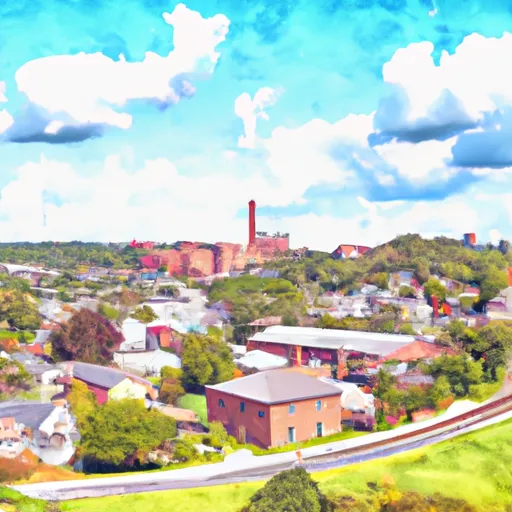-
 Snoflo Premium
Snoflo Premium
Get unlimited access to all our content
With no Ad interruptions! - Start Your Free Trial Login with existing account
Eckhart-Mines
Eden Index
Climate
9.2
•
Recreation
6.3
•
Community
2.5
•
Safeguard
6.5/10

Eckhart-Mines is a small community located in western Maryland with a humid continental climate. Summers are warm and humid, while winters are cold and snowy. The area is characterized by rolling hills and forests, with several small streams and creeks running through the region. The hydrology constituents of these waterways include sediment, nutrients, and pollutants from nearby agricultural fields and residential areas. Outdoor recreation opportunities in Eckhart-Mines include hiking and biking trails, fishing in the streams and creeks, and hunting in the surrounding forests. The area is also home to several state parks and wildlife management areas that offer additional recreational activities.
What is the Eden Index?
The Snoflo Eden Index serves as a comprehensive rating system for regions, evaluating their desirability through a holistic assessment of climate health, outdoor recreation opportunities, and natural disaster risk, acknowledging the profound impact of these factors on livability and well-being.
Climate Health Indicator (CHI): 9.2
Eckhart-Mines receives approximately
1104mm of rain per year,
with humidity levels near 77%
and air temperatures averaging around
10°C.
Eckhart-Mines has a plant hardyness factor of
6, meaning
plants and agriculture in this region thrive during a short period during spring and early summer. Most
plants will die off during the colder winter months.
By considering the ideal temperature range, reliable water supplies, clean air, and stable seasonal rain or snowpacks, the Climate Health Indicator (CHI) underscores the significance of a healthy climate as the foundation for quality living.
A healthy climate is paramount for ensuring a high quality of life and livability in a region, fostering both physical well-being and environmental harmony. This can be characterized by ideal temperatures, reliable access to water supplies, clean air, and consistent seasonal rain or snowpacks.
Weather Forecast
Streamflow Conditions
Potomac
Area Rivers
Potomac
Snowpack Depths
Potomac
Reservoir Storage Capacity
Potomac
Groundwater Levels
Recreational Opportunity Index (ROI): 6.3
The Recreational Opportunity Index (ROI) recognizes the value of outdoor recreational options, such as parks, hiking trails, camping sites, and fishing spots, while acknowledging that climate plays a pivotal role in ensuring the comfort and consistency of these experiences.
Access to outdoor recreational opportunities, encompassing activities such as parks, hiking, camping, and fishing, is crucial for overall well-being, and the climate plays a pivotal role in enabling and enhancing these experiences, ensuring that individuals can engage in nature-based activities comfortably and consistently.
Camping Areas
| Campground | Campsites | Reservations | Toilets | Showers | Elevation |
|---|---|---|---|---|---|
| Spring Gap - C and O Canal National Park | 19 | 563 ft | |||
| Trout Pond | 70 | 1,995 ft | |||
| Lorain Borough Park | None | 1,316 ft | |||
| Duman Lake County Park | 6 | 1,743 ft | |||
| Adams Croyle | None | 1,688 ft | |||
| Wolf Gap | 10 | 2,245 ft | |||
| Nanty Glo Municipal Park | None | 1,733 ft | |||
| Quemahoning Family Rec Area | 63 | 1,668 ft |
Nearby Ski Areas
Catastrophe Safeguard Index (CSI):
The Catastrophe Safeguard Index (CSI) recognizes that natural disaster risk, encompassing floods, fires, hurricanes, and tornadoes, can drastically affect safety and the overall appeal of an area.
The level of natural disaster risk in a region significantly affects safety and the overall livability, with climate change amplifying these risks by potentially increasing the frequency and intensity of events like floods, fires, hurricanes, and tornadoes, thereby posing substantial challenges to community resilience and well-being.
Community Resilience Indicator (CRI): 2.5
The Community Resilience Indicator (CRI) recognizes that education, healthcare, and socioeconomics are crucial to the well-being of a region. The CRI acknowledges the profound impact of these elements on residents' overall quality of life. By evaluating educational resources, healthcare accessibility, and economic inclusivity, the index captures the essential aspects that contribute to a thriving community, fostering resident satisfaction, equity, and social cohesion.

